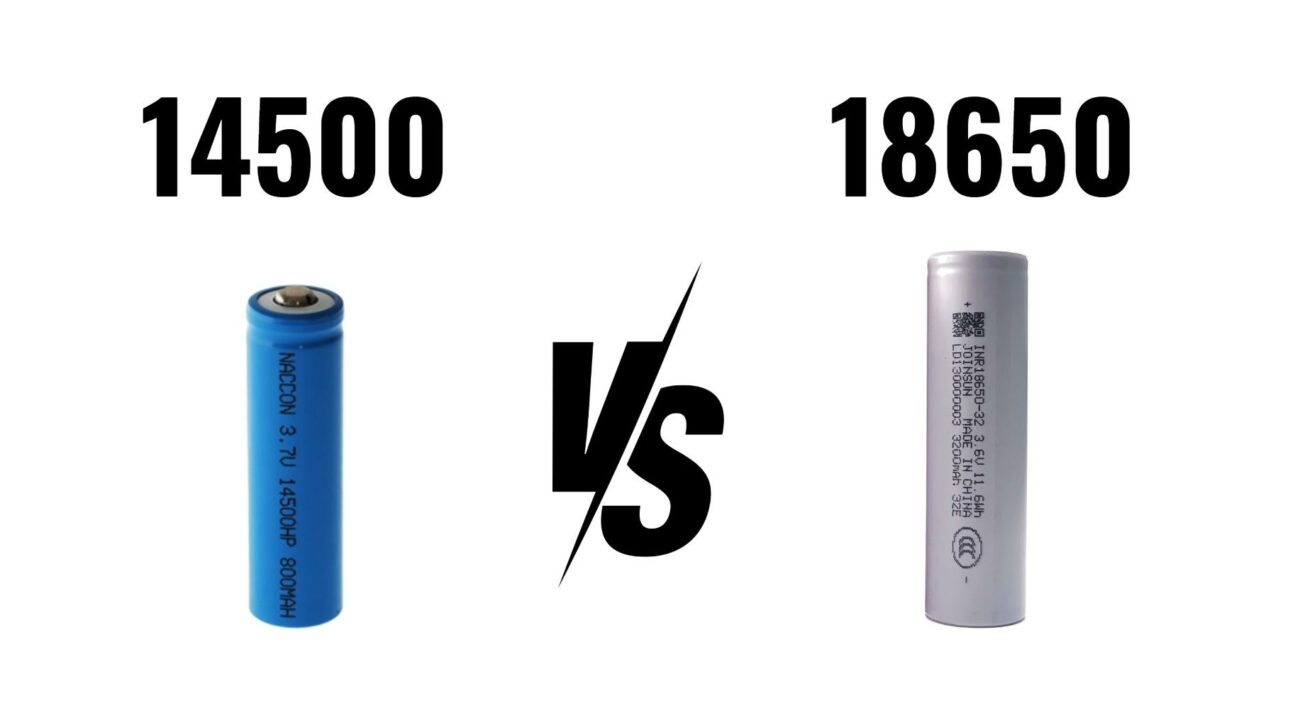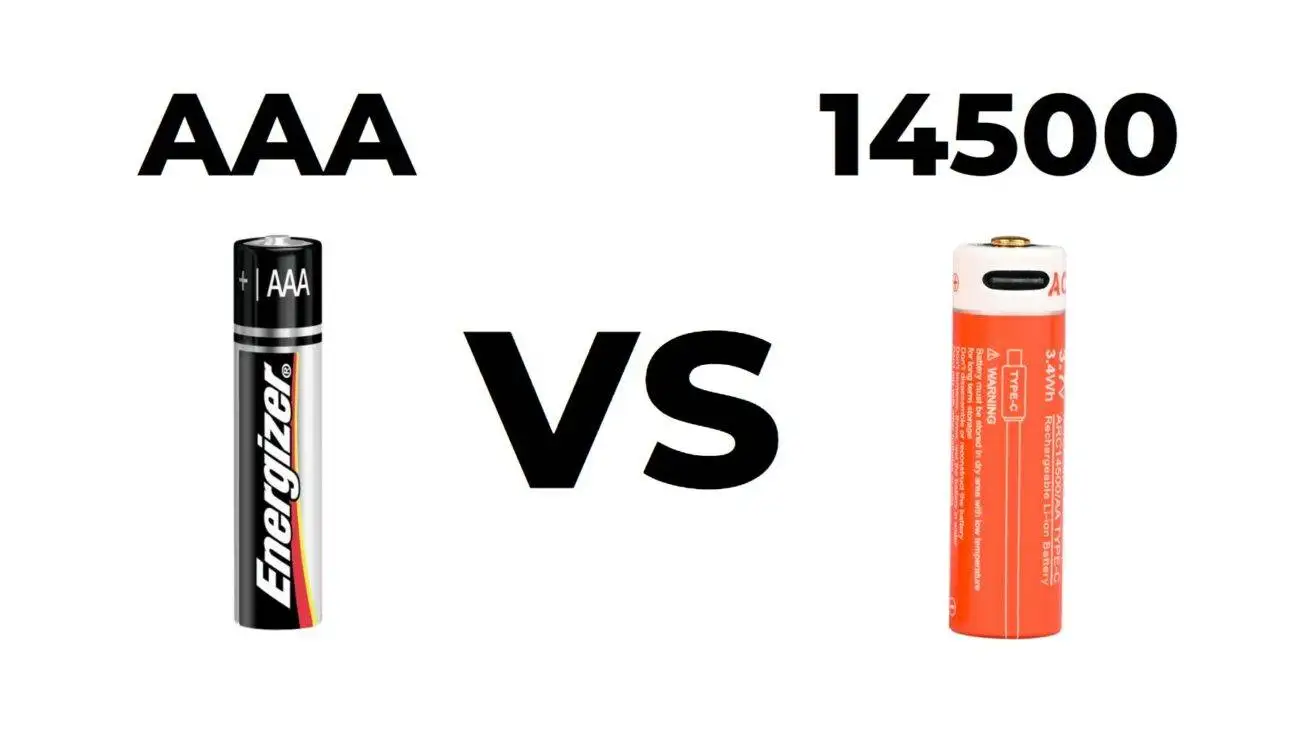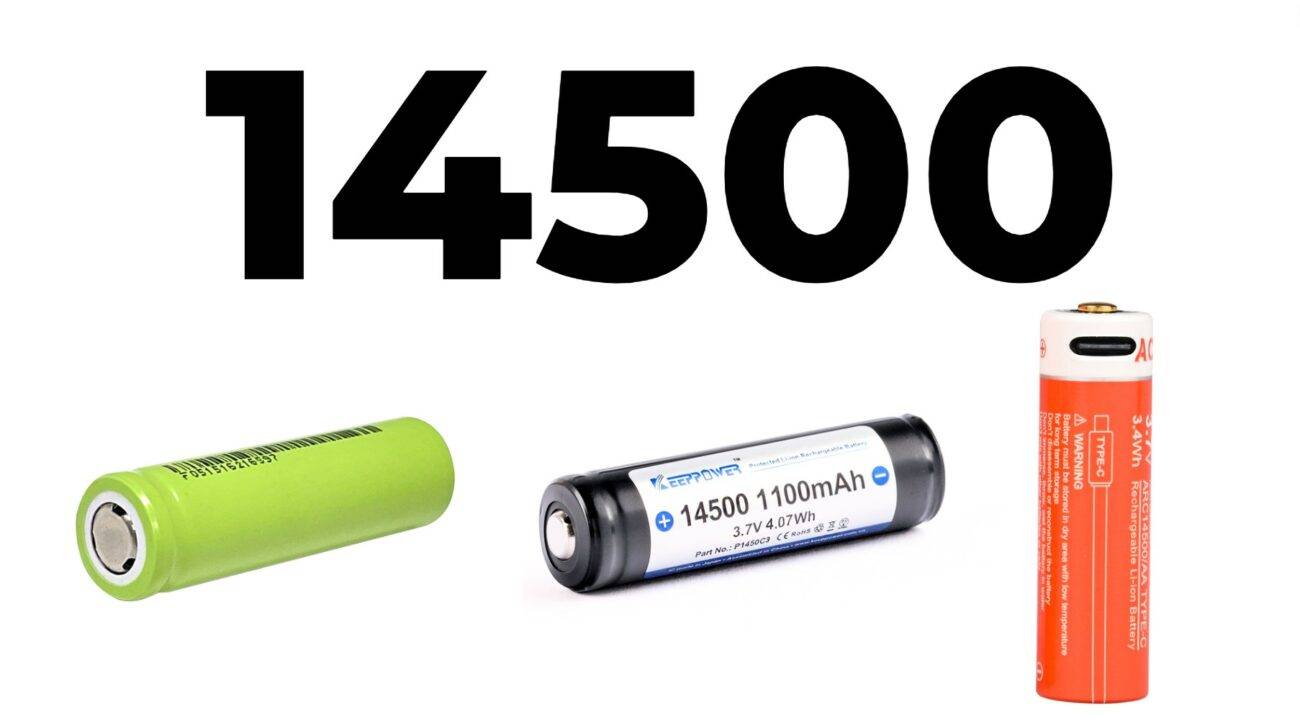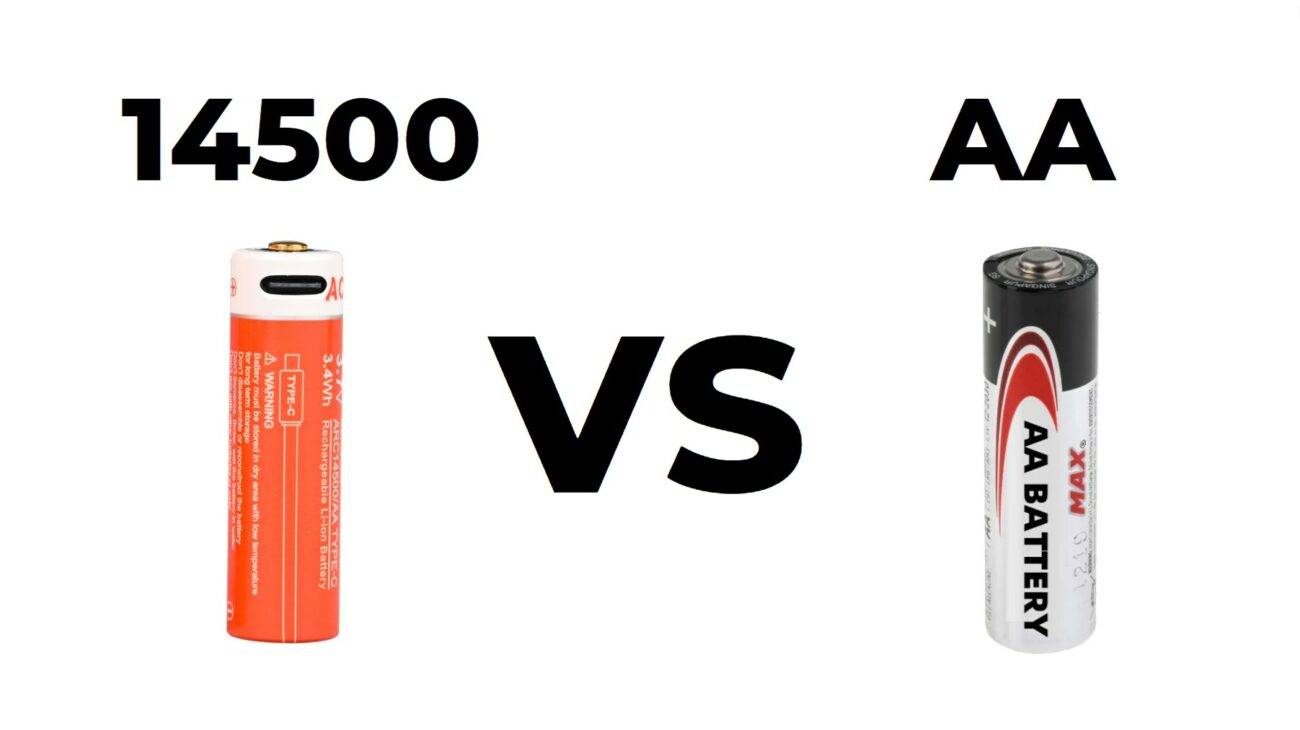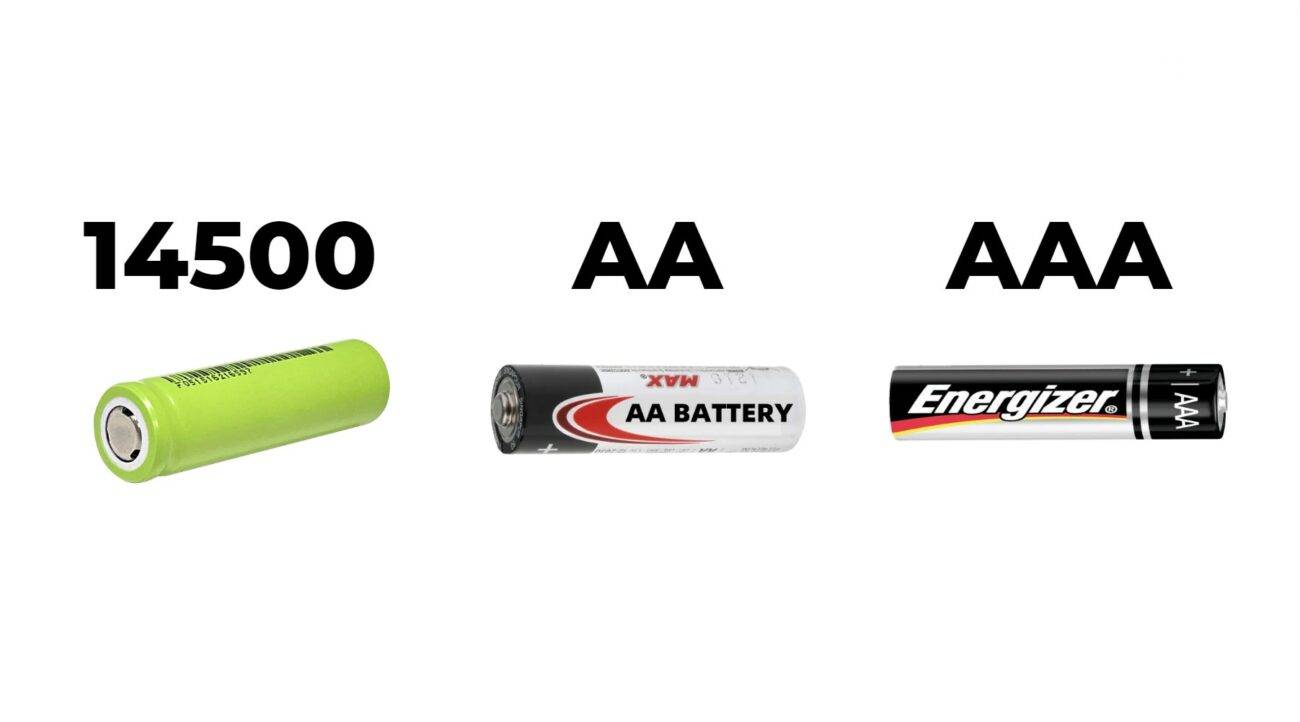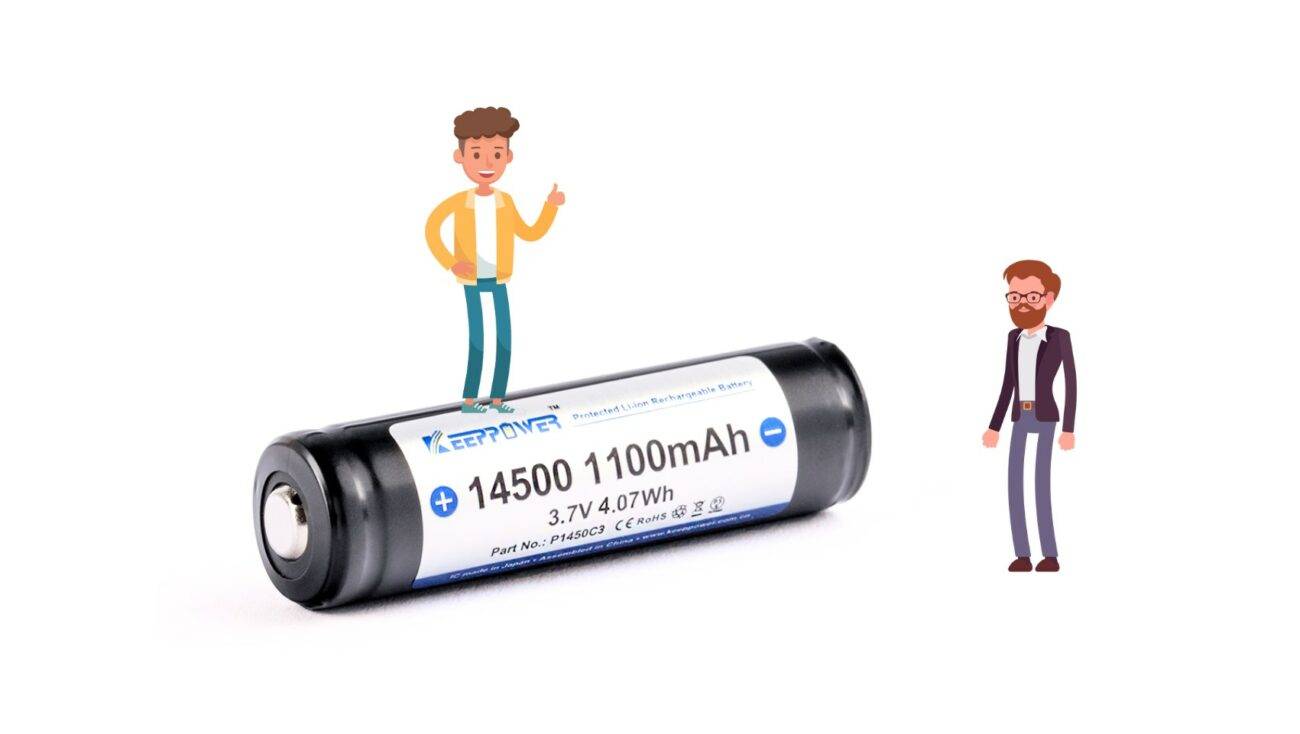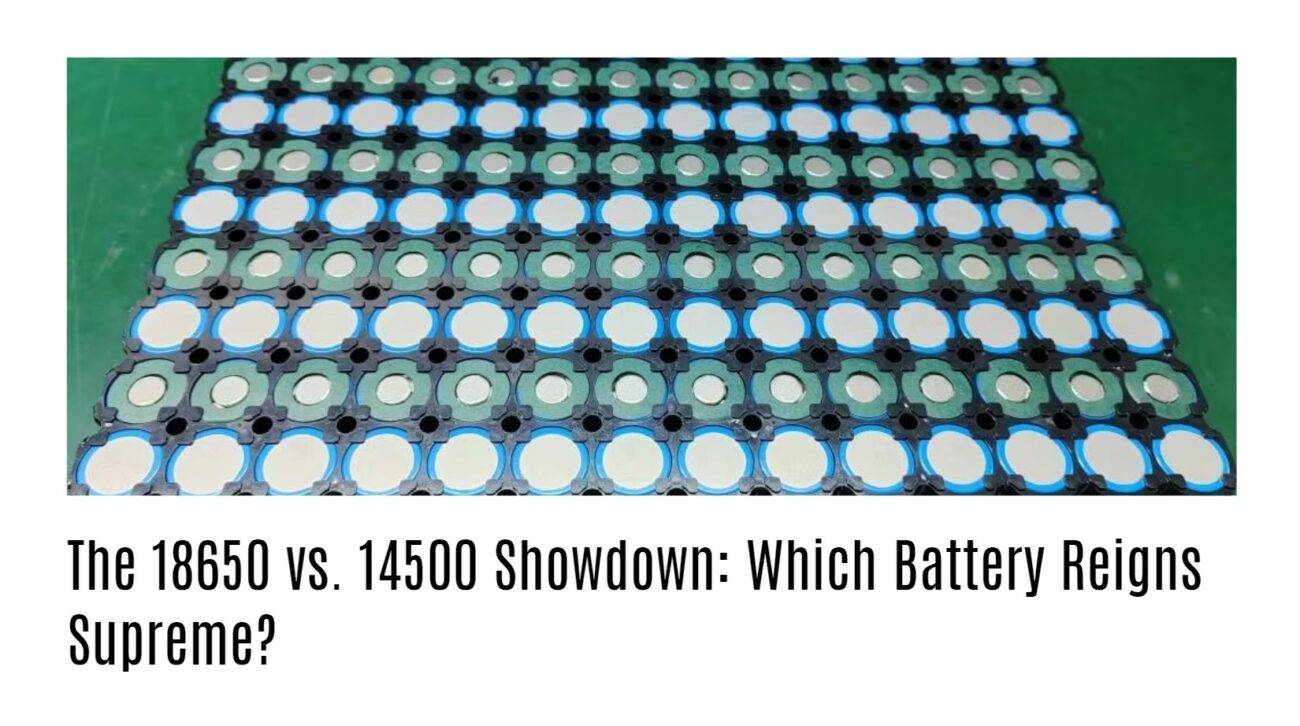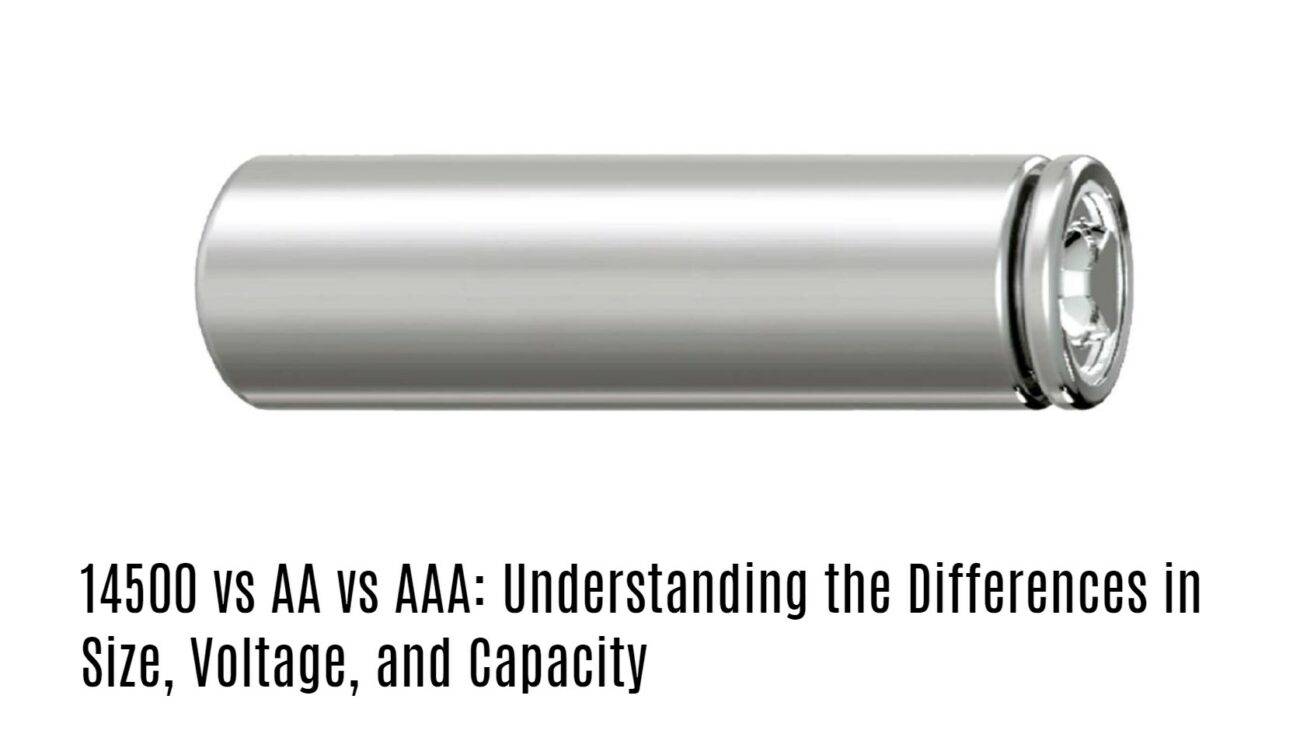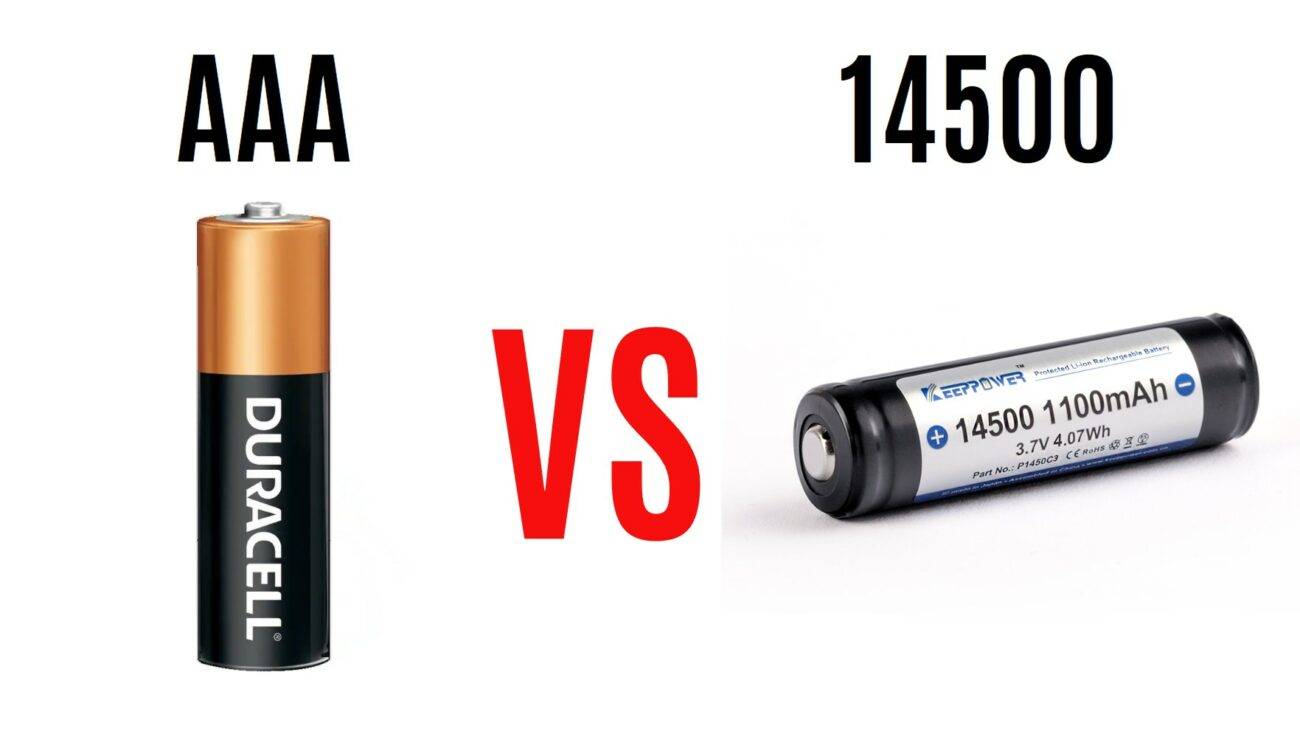The 14500 and AA batteries look similar in size but differ significantly in voltage, chemistry, and usage. The 14500 is a rechargeable lithium-ion battery with a nominal voltage of 3.7 volts, while standard AA batteries are usually 1.5 volts alkaline or 1.2 volts rechargeable NiMH cells. Due to this voltage difference, they should not be interchanged without considering device compatibility.
What Are the Main Differences Between 14500 and AA Batteries?
Both 14500 and AA batteries share a size similarity, about 14mm in diameter and 50mm in length, but they differ in chemistry, voltage, capacity, and rechargeability. The 14500 battery is a lithium-ion cell with a typical voltage of 3.7V and is rechargeable. In contrast, AA batteries come in multiple chemistries such as alkaline (1.5V disposable), NiMH (1.2V rechargeable), and lithium variants. These differences affect their application in devices, making them non-interchangeable in many cases.
14500 batteries offer higher energy density and voltage, suitable for high-drain devices, while AA batteries remain widely compatible and generally lower in voltage, fitting a broader range of household electronics. 14500 batteries usually feature a shorter but robust cycle life compared to some rechargeable AA options.
How Do Voltage Differences Affect the Use of 14500 and AA Batteries?
The 14500 battery’s nominal voltage of 3.7 volts is more than double that of an AA alkaline battery’s 1.5 volts and significantly higher than the 1.2 volts found in NiMH rechargeable AA batteries. This voltage disparity means using a 14500 battery in a device designed for AA batteries can cause damage or malfunction. Conversely, swapping a lower-voltage AA into a 14500 device will likely result in insufficient power or failure to operate.
Devices designed for higher voltage lithium-ion batteries like the 14500 often have specific circuitry to manage this, so substituting without considering voltage requirements is unsafe and not recommended.
Which Battery Has Better Capacity and Performance?
Capacity varies based on battery type. Typical 14500 lithium-ion batteries offer capacities ranging from 600mAh to 800mAh, sometimes higher depending on manufacturer and quality. Standard alkaline AA batteries have capacities around 2000-2700mAh but are disposable. Rechargeable NiMH AA batteries can match or exceed 2000-2500mAh.
However, the higher voltage of the 14500 means the total energy output (voltage times capacity) might be higher for high-drain applications even with lower mAh. Performance depends on device requirements—high-drain devices benefit from the 14500’s chemistry and voltage, whereas many household devices function well with AA batteries.
Can You Safely Replace AA Batteries With 14500 Batteries, or Vice Versa?
Generally, no. Despite the physical size similarity, the significant voltage difference between 14500 (3.7V) and AA (1.5V) batteries means direct interchange can damage devices or impair performance. Only specialized devices designed to handle both voltages or those clearly indicated by the manufacturer can interchange these battery types safely.
Always check the device’s specifications before substituting batteries. For example, certain flashlights support both, but typical household electronics should not use 14500 batteries unless explicitly stated.
What Are Typical Applications for 14500 and AA Batteries?
14500 batteries are favored in high-drain, compact electronic devices requiring high energy density and voltage—such as high-performance flashlights, electronic cigarettes, and some cameras. Their rechargeable nature and power output make them ideal where compact, long-lasting power is needed.
In contrast, AA batteries are ubiquitous across consumer electronics like remote controls, toys, clocks, and wireless devices, valued for their versatility, availability, and variety of chemistries. Rechargeable AA variants also serve applications needing regular replacement with cost efficiency in mind.
How Does Chemistry Impact Battery Safety and Lifecycle Between 14500 and AA?
14500 batteries use lithium-ion chemistry, known for higher energy density and rechargeability but requiring careful charging management and safety features due to potential risks like overheating or short circuits.
AA batteries can be alkaline (disposable, lower cost, no recharge), NiMH (safe rechargeable with moderate cycle life), or lithium-ion types. Rechargeable AA batteries generally have a cycle life ranging from 500 to 1000 cycles, whereas 14500 lithium-ion cells tend to have 300 to 500 cycles. Proper battery management and matching battery chemistry with device requirements ensures safety and maximizes lifespan.
How Does Redway Battery Ensure High-Quality 14500 and Lithium Battery Solutions?
Redway Battery, a leading OEM lithium battery manufacturer with over 13 years of expertise, specializes in premium LiFePO4 and lithium-ion solutions including 14500 cells. With ISO 9001:2015 certification and advanced factories in Shenzhen, Redway provides high-performance, safe, and durable batteries globally. Their engineering team supports full OEM/ODM customization, ensuring every battery perfectly meets client needs in safety and efficiency.
Redway Battery’s commitment to innovation and quality assurance makes it a trustworthy supplier for both specialized and general battery applications.
What Are the Environmental Impacts of Using 14500 vs AA Batteries?
Rechargeable 14500 lithium-ion batteries can reduce environmental waste compared to disposable alkaline AA batteries, which contribute to landfill after a single use. Rechargeable AA batteries (NiMH) offer a middle ground with several recharge cycles but lower energy density.
Choosing rechargeable batteries like 14500 or NiMH AA reduces battery waste and lowers the carbon footprint of portable device usage over time. Always recycle batteries properly according to local regulations.
Redway Battery Expert Views
“With the growing demand for efficient, rechargeable power sources, the industry increasingly favors lithium-ion technology, especially for specialized applications such as electric forklifts and golf carts. Redway Battery’s focus on LiFePO4 and 14500 lithium-ion cells highlights the balance of safety, longevity, and performance that modern energy storage requires. In playground and other dynamic industries, the adaptability and reliability of high-quality lithium batteries ensure devices function optimally while meeting environmental standards.” — Redway Battery Engineering Team
Summary of Key Takeaways and Advice
14500 and AA batteries differ primarily in voltage (3.7V vs. 1.5V) and chemistry (lithium-ion vs. alkaline/NiMH).
Due to voltage and chemistry differences, they are generally not interchangeable without checking device compatibility.
14500 batteries excel in high-drain, compact devices requiring rechargeable, high voltage cells.
AA batteries remain versatile and widely available for everyday household electronics with multiple chemistry options.
Always consult device specifications before substituting batteries.
Redway Battery offers reliable, high-quality lithium battery solutions with global OEM customization services.
Choose rechargeable batteries when possible to reduce environmental impact and save long-term costs.
Frequently Asked Questions
Can a 14500 battery replace a standard AA battery?
No, due to the higher voltage of 14500 batteries, using them in devices designed for AA batteries can damage the device.
Are 14500 batteries rechargeable?
Yes, 14500 batteries are lithium-ion rechargeable cells, providing multiple recharge cycles.
What voltage do AA batteries provide?
Standard alkaline AA batteries provide 1.5 volts, and rechargeable NiMH versions provide about 1.2 volts.
Are there devices compatible with both 14500 and AA batteries?
Some high-performance flashlights and specialized devices are designed to safely use both battery types.
Which is more environmentally friendly, 14500 or AA batteries?
Rechargeable batteries, whether 14500 lithium-ion or NiMH AA, have a lower environmental impact than disposable alkaline AA batteries.






